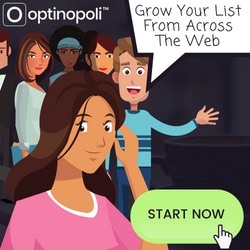Am I right? Thought so. Truth is, the vast majority of website owners are in the same boat.
Unfortunately many website owners focus solely on SEO, to the exclusion of all else that would build their traffic in a more solid way for the long term. They then end up completely reliant on their ranking as to whether they’re still in business next week or not.
Not the best position to be in, and a dangerous one too with Google’s continual updates to their ranking algorithms.
The good news is that there are several powerful strategies you can use right now that not only drive more traffic to your site, but drive the right kind of traffic (visitors more likely to purchase). Furthermore, they continue to drive it over the long term.
And, unsurprisingly, content marketing lies at the heart of them.
So, rather than putting yourself at the mercy of SEO, by investing your time and effort in these strategies now, they’re likely to still be driving traffic to your site years from now.
1. Referral Traffic
By ‘referral traffic’, I mean other websites, businesses and individuals who refer visitors to your site.
Some of the following strategies will build the amount of referral traffic you receive, but the most valuable type of referral traffic is where another business or individual is directly recommending your website. Visitors are far more likely to believe a third party talking about your business, than they are to believe you talking about your own business.
So how can you build up the number of sites referring visitors to you in this way? Here are some strategies to use:
- Make your product or service as great as it can be. Go beyond your customer’s expectations. Deliver as much value as you can. You’ll find people sharing their positive experiences online as a result.
- Similarly, take great care of your customer support. Go the extra mile to help your customers.
- Deal promptly with any complaints. You’ll be surprised how often a complaint can turn into a referral, where their complaint has been listened to, they have been dealt with in a professional manner, and their issue resolved. It builds trust in your business, and they’re consequently happy to recommend you to others.
- Create an affiliate program. If someone refers visitors to you through their affiliate link, they earn a commission on any sales.
- Ask for referrals – there doesn’t always have to be an incentive. Simply ask customers if they know anyone who would also benefit from the product or service you provide, and if so whether they would mind making a recommendation.
2. Article Marketing
While article marketing has received some negative press recently following Google’s Panda and Penguin updates, it’s mainly from business owners with a sole focus on SEO.
Truth is, article marketing still works as a traffic-driver in its own right. Article directories remain some of the highest ranked sites in the world in terms of traffic, and it makes sense to ensure you have your own content and links on these sites to siphon off some of that traffic to your own site.
Not only that, the articles can then end up in more niche-focused sites (even some membership sites), giving you links and new traffic sources from there too.
Most articles I write and syndicate to article directories get hundreds of views within a few days of publication. Some get thousands.
Over the course of a few months and years, the articles continue to get read, with some attracting tens of thousands of views over time.
(And by the way, that’s just one article directory … and I syndicate my articles to several high-traffic article directories, blogs, and other publishers.)
You also don’t have to always link back to your main site. For example, link back to your social media profiles and build up your followers. Or build up a powerful and profitable email list by linking back to a squeeze page domain where you offer something of value in exchange for the visitor’s email address.
Updated: submitting articles to article directories is generally no longer worth pursuing. For more worthwhile is repurposing your content for sites like Medium, Quora, Tumblr and so on.)
3. Buy Traffic
Yes, you can buy traffic. Most people’s immediate response is, “But isn’t that expensive?”. It’s only costly if you do it wrong.
The idea with paid traffic is of course that you spend less on buying the traffic than that traffic spends with you.
I’ve used paid traffic, profitably, for several years. The important factors are to ensure you know the lifetime value of the customer (so how much a customer is worth to you on average over time), to get conversions on your website as high as possible, and to not spend more than you can afford to lose. It takes time and some initial cash investment to get paid traffic working effectively for you.
4. Retargeting
Retargeting is a branch of paid traffic, but worthy of a mention in its own right. It involves displaying ads to people who have visited your website at some point in the past. If you’ve ever for example viewed a product on Amazon, and then wonder why you keep seeing the same product advertised to you on various sites around the web, that’s retargeting in action.
In some ways, it’s similar to following up with prospects by email or direct mail, except it’s cheaper (you only pay if they click on your ad), you don’t need their contact details (it works via cookies on their computer), and requires minimal effort once you’ve got it all set up.
5. Email Marketing
Email marketing involves capturing the email address of your prospects, and then following up with them by email. This can also run on auto-pilot, so you set up a sequence of email messages, and then each new subscriber to your list will receive the messages in sequence over a series of days, weeks, or months.
By communicating with your list on a regular basis, and inviting them to revisit your website, you not only steadily build your traffic over time, you also build your relationship with your subscribers, and make selling to them far more likely.
6. Blogging
Blogging on a regular basis has a number of benefits in terms of long-term traffic.
You end up with a lot of content in the search engines that attract visitors for a ton of different but related queries.
You build up a sense of community with your prospects and visitors, add credibility and authority to your business, and improve conversions.
Other blogs start linking to your posts and driving more targeted traffic your way.
And the best bit is it need not take much more effort, and ties in well with your other traffic strategies. For example, the content you create or have written for your blog can then be adapted for use with article marketing, social media, video creation, referred to from your forum and blog comments, and so on.
In effect, your blog becomes the central hub in your whole traffic strategy.
7. Forum and Blog Commenting
Find forums relevant to your niche, and start interacting with other forum users, both posting and answering questions.
While it’s often bad form to link directly to your own sales materials from such forums, you can often link back to your blog posts as a way to help with the forum’s queries (or even use such queries as inspiration for your next blog post!).
But often the most useful application can be to simply link back to your site from your signature and your profile on the forum. As people get to know you and recognize your authority on particular topics, you’ll find an increasing number will click through to your site out of sheer curiosity, and with similar interests, sales often result.
Not only that, you can also build up good relationships for future joint venture purposes, and can result in significant new sources of referral traffic.
Similarly with blogs, find other blogs with content relevant to your own niche, and post interesting, insightful comments that show you’ve actually spent time reading the post and have something of value to offer.
As well as linking back to your site via the ‘Website’ field you’ll see on most blog’s comment forms, you may be able to also on occasion link back to your own blog post directly within the comment itself if it adds genuine value to the topic discussed.
Of course, avoid the ‘comment spam’ route like the plague. So don’t leave meaningless comments, and try to avoid setting your ‘Name’ as a keyword just to get a keyword link back. It’s disrespectful of the blog’s owner, and isn’t as valuable long-term as engaging properly with the blog in question.
8. Videos
With YouTube the world’s second largest search engine, and also owned by Google, you’re leaving a huge amount of potential traffic on the table by not having niche-focused videos here driving traffic back to your business.
Even if you don’t want to get in front the camera, you can simply record a presentation on your PC with a voiceover, and upload that. Keep your website’s URL prominent through the video, as well as including a link in the video’s description.
Base new videos on previous blog posts, and you can have a continual stream of content that can act as a powerful long-term traffic driver for your business.
9. Social Media
By building up your presence on social media, engaging with like-minded individuals and people with interests related to your niche, and building up relationships with some powerful players in your niche, social media can be a powerful long-term traffic driver.
In a way, social media is the glue that holds the other strategies mentioned above together, as well as increase their effectiveness.
For example, whenever you publish a new article, new blog post, new video, etc., post it to your social media sites. You’ll get increased engagement, attract new followers, and help spread the word about your business.
When someone ‘Likes’ you on Facebook, ‘+1’s your content on Google+, or tweets/retweets your content, they spread the word about your business through their own networks, and this can become viral in effect, bringing your business to the attention of new audiences you wouldn’t otherwise reach.
Plus, as icing on the cake, social signals are becoming increasingly important to your search engine rankings, as illustrated in the following gifographic:

10. Sell What They Want
This might seem a strange one to include in list of traffic strategies, but it’s vitally important. If you’ve not got something people want to buy, and preferably with something unique to offer within your marketplace (your USP), getting traffic becomes a lot more difficult.
Conversely however, when you have a great product with a powerful USP that taps a need in the marketplace, traffic becomes relatively easy to achieve. People will spread the word about you far more willingly, you’ll end up with a ton more naturally-occurring links referring traffic to you, and your marketing will work much more effectively, including attracting a lot more interest for the content you’re producing.



